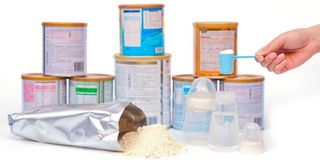How to stop breastfeeding successfully

The first step to stopping breastfeeding is to be patient.
What you need to know:
- It takes time for your body to adjust to the change. Your baby will need time to get used to drinking from a bottle or cup.
- If you're finding the process stressful or difficult, many resources are available to support you.
How do you stop breastfeeding without hurting your baby? This can be a difficult decision to make. You may be worried about the health of your child, or you may feel like you are not able to continue breastfeeding. Whatever your reasons, this guide will help you make the transition as smooth as possible for both you and your baby.
Be patient
The first step to stopping breastfeeding is to be patient. It takes time for your body to adjust to the change. Your baby will need time to get used to drinking from a bottle or cup.
Be patient and gentle with yourself and your baby during this transition. Of course, there will be some trial and error as you figure out what works best for you, but eventually, you'll find a method that works.
If you're finding the process stressful or difficult, many resources are available to support you.
Talk to your doctor, a lactation consultant, or a trusted friend or family member for guidance and advice.
Start slow
Gradually reduce the number of times you breastfeed each day. This will give your body time to adjust and allow your baby to get used to drinking from a bottle or cup.
Starting slow will also help your breasts to produce less milk gradually. This can help to prevent engorgement, which can be painful and uncomfortable.
Offer other comforts
In addition to being patient and starting slow, offer your baby other forms of comfort.
This may include cuddling, rocking, or singing. These activities soothe and calm your baby, even when they're not being fed.
Partial weaning
Partial weaning can be a helpful strategy if you find it difficult to stop breastfeeding completely.
With partial weaning, you continue to breastfeed your baby and introduce other foods and drinks.
This can help your baby gradually get used to taking in nutrients from sources other than your breast milk.
Listen to your baby's cues
This means allowing your baby to breastfeed when they only show signs that they're hungry or want to breastfeed.
But, it also means respecting their cues when they're no longer interested in breastfeeding.
If your baby turns away from the breast or pushes you out, this is a clue that they're done breastfeeding.
Respecting these cues will make the weaning process easier for you and your baby.
Take care of your breast
During the weaning process, taking care of your breasts is essential.
Wearing a supportive bra and using cold compresses can help ease any discomfort you may feel.
Continue to empty your breasts regularly. This can be done by hand-expressing. Breast pumping is discouraged as it will increase milk production.
Commonly asked questions
When does one stop breastfeeding?
There is no exact answer to this question as every situation is different. For example, you may stop breastfeeding when your baby starts weaning, or you may continue until they're a year or older. Ultimately, deciding when to stop breastfeeding is up to you and your baby.
What are some signs that my baby is ready to stop breastfeeding?
There are a few signs that your baby may be ready to stop breastfeeding. These include:
- Your baby is no longer interested in breastfeeding or only wants to breastfeed for short periods.
- Your baby is starting to eat solid foods and get the most nutrients.
- You are feeling ready to stop breastfeeding.
How do I know if I'm doing it right?
There is no right or wrong way to stop breastfeeding. Every situation is different, and you will need to figure out what works best for you and your baby.
However, if you're finding the process difficult or stressful, many resources are available to support you. Talk to your doctor, a lactation consultant, or a trusted friend or family member for guidance and advice.
Is it safe to stop breastfeeding cold turkey?
This means stopping abruptly. Stopping breastfeeding gradually is typically recommended, as it's easier on both you and your baby. However, there are some situations where stopping breastfeeding cold turkey may be necessary. However, it has risks such as engorgement, mastitis, and malnourished child.
To ease the engorgement, pump little milk and massage your breasts. In addition, talk to your baby's doctor who will guide you on how to stop breastfeeding cold turkey without hurting your baby




